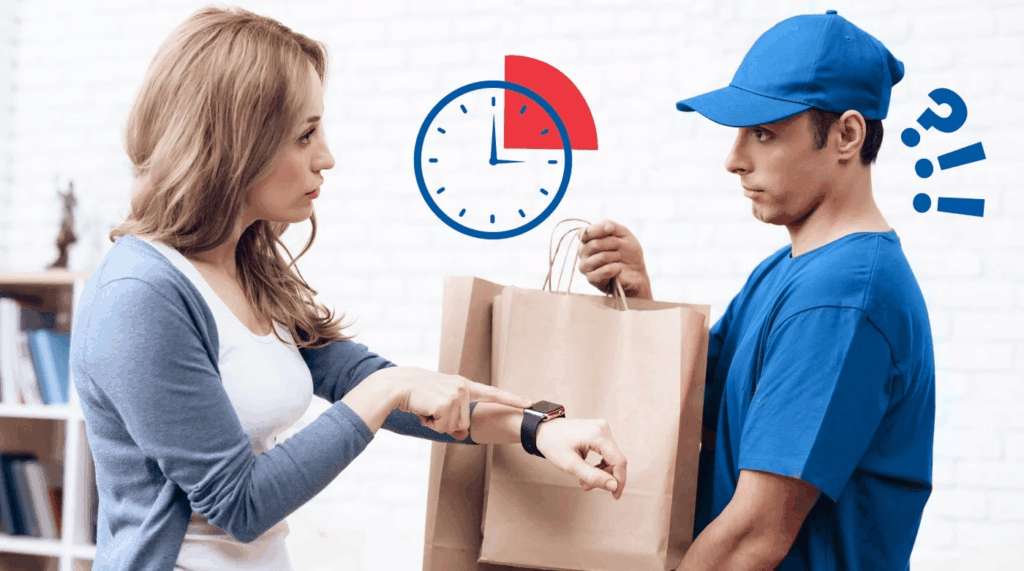E-commerce Fulfillment Challenges for Cross-Border Brands
E-commerce fulfillment challenges for cross-border brands are becoming more complicated as global shopping demand continues to rise. Buyers in Europe, North America, and Asia expect the same fast, transparent service whether they order locally or across continents. For sellers, this means handling customs duties, clearance procedures, return logistics, and delivery speed with precision. These issues can overwhelm teams, yet the right technology and strategy can turn them into a competitive advantage.

Understanding the Scope of Cross-Border Fulfillment
Why E-commerce Fulfillment Feels More Complex
Domestic fulfillment is relatively predictable. A few local carriers, one tax system, and faster lead times make operations easier to manage. Once orders cross borders, new variables emerge: import taxes, different regulations, and fragmented delivery networks.
For example, a product shipped from Germany to the United States may touch three carriers, pass through two customs offices, and face multiple compliance checks. Without proper systems in place, sellers risk delays, hidden costs, and frustrated customers.
Customer Expectations Are Shifting
The rise of Amazon Prime and same-day delivery has reshaped buyer expectations. Customers no longer tolerate vague shipping windows or surprise fees. They want transparency from checkout to delivery, even if the order is traveling thousands of miles. A survey showed that 93% of global shoppers expect clear tracking updates, while 70% claim they would not reorder after a poor delivery experience.
This proves that fulfillment is not only about logistics—it is a direct driver of brand reputation.
Challenge 1: Customs Duties and Taxes
The Problem
Customs duties remain one of the top reasons for customer dissatisfaction. When fees are charged unexpectedly at the door, buyers feel misled. Many abandon their carts if duties are not displayed upfront.
The Solution
- Transparent Duty Calculations: Provide real-time tax and duty estimates during checkout. This reduces cart abandonment and prevents disputes.
- DDP (Delivered Duty Paid): Sellers remove customer friction by covering duties in advance. Although margins are tighter, the improved customer experience often leads to more repeat purchases.
- Technology Integration: Platforms like PostalParcel can automatically calculate duties based on product type and destination. This eliminates guesswork.
Example: A fashion brand entering the Canadian market introduced DDP shipping through a fulfillment platform. Within two months, cart abandonment dropped by 25%, proving that upfront transparency builds trust.
Challenge 2: Customs Clearance Delays

The Problem
Parcels often get stuck in customs due to incomplete paperwork, misclassified HS codes, or missing certificates. Each delay generates WISMO inquiries, adding pressure to support teams.
The Solution
- Automated Documentation: Generate shipping labels, invoices, and HS codes digitally to minimize errors.
- Local Partnerships: Partner with carriers experienced in regional customs processes. Their expertise speeds up clearance.
- Proactive Alerts: Use a platform that flags delays before customers complain. This allows teams to send proactive messages with updated timelines.
Data Insight: Brands using automated customs documentation reduce clearance delays by 35% on average compared to manual processes.
Challenge 3: Return Management Across Borders
The Problem
Returns are part of e-commerce, yet international returns are expensive and slow. Customers dislike mailing items back overseas, and brands struggle with re-stocking and cost recovery.
The Solution
- Regional Return Hubs: Set up local warehouses or partner with 3PLs (third-party logistics providers) to collect returns closer to buyers.
- Prepaid Return Labels: Offering easy return labels boosts confidence at checkout.
- Reverse Logistics Optimization: Platforms like PostalParcel consolidate returns, reducing per-item costs.
Case Example: An electronics brand selling in Southeast Asia built a regional return hub in Singapore. This cut return processing time by 60% and significantly reduced refund complaints.
Challenge 4: Delivery Time Expectations

The Problem
Cross-border shipping naturally takes longer, yet customers compare it to domestic express delivery. When updates are slow or vague, frustration grows.
The Solution
- Clear Timelines at Checkout: Display realistic delivery ranges (e.g., “7–12 business days”) instead of vague promises.
- Branded Tracking Pages: Provide real-time updates on a company-branded page, so customers do not need to check third-party courier sites.
- Hybrid Carrier Strategy: Use a mix of premium couriers for urgent orders and postal networks for standard shipping.
Research: Businesses offering branded tracking pages see 20% higher repeat purchase rates because customers trust the post-purchase journey.
Challenge 5: Cost Control and Hidden Fees
The Problem
Global fulfillment is full of hidden costs: fuel surcharges, remote area fees, packaging costs, and insurance charges. Without visibility, these costs quietly reduce margins.
The Solution
- Performance-Based Carrier Selection: Use analytics to compare cost vs delivery performance and select the most efficient option.
- Negotiated Rates: Consolidate shipment volumes to qualify for better rates.
- Centralized Billing Platforms: Tools like PostalParcel combine all carrier charges into one invoice, making costs easier to monitor and reduce.
Challenge 6: Communication Barriers
The Problem
Many carriers provide tracking updates only in English, leaving international customers confused. This creates unnecessary WISMO inquiries.
The Solution
- Multi-Language Tracking Updates: Offer updates in the buyer’s native language.
- Localized Customer Support: Provide FAQ pages and support responses tailored to each region.
- Unified Notifications: Combine updates from multiple carriers into one clear communication stream.
Turning Challenges Into Growth Opportunities

Transparency as a Differentiator
Cross-border brands often think delivery problems must be hidden. Yet research shows customers prefer honesty. By clearly stating duties, timelines, and return policies upfront, sellers reduce complaints and earn trust.
Technology as the Backbone
A global logistics track platform consolidates carriers, automates updates, and provides analytics. Instead of chasing fragmented data, sellers can manage fulfillment from one hub.
Case Study: A European lifestyle brand expanded to the U.S. and Asia. Before implementing a logistics platform, 60% of support tickets were WISMO-related. Three months after adoption:
- WISMO tickets dropped by 70%.
- Customer satisfaction scores rose by 40%.
- Delivery transparency became a unique selling point in marketing campaigns.
Practical Steps for Cross-Border Sellers
Step 1: Map Out Market-Specific Rules
Understand duty thresholds, prohibited items, and shipping regulations in each target country.
Step 2: Centralize Fulfillment Data

Integrate sales channels, carriers, and warehouses into one platform to eliminate silos.
Step 3: Invest in Returns Infrastructure
Partner with logistics providers that offer regional hubs and cost-efficient return processing.
Step 4: Focus on Customer Communication
Set clear delivery expectations and use proactive notifications to prevent frustration.
Step 5: Measure and Improve
Track KPIs like average delivery time, WISMO ticket volume, and carrier reliability. Based on the data, adjust strategies.
The PostalParcel Advantage
PostalParcel is designed to simplify e-commerce fulfillment. With multi-carrier integration, branded tracking pages, customs insights, and proactive delay alerts, it helps businesses handle the toughest parts of international e-commerce.
Key benefits include:
- 70% reduction in WISMO inquiries through proactive communication.
- Faster clearance with automated documentation tools.
- Smarter returns using regional hubs and consolidated logistics.
- Higher customer satisfaction by turning post-purchase tracking into a branded experience.
Conclusion
E-commerce fulfillment challenges for cross-border brands—customs duties, clearance delays, returns, and delivery speed—are real but not impossible to solve. By embracing transparency, leveraging technology, and adopting data-driven logistics strategies, brands can transform e-commerce fulfillment from a pain point into a growth engine. Platforms like PostalParcel enable sellers to deliver smoother experiences, reduce costs, and earn long-term loyalty in the competitive global marketplace.
Industry Insights
news via inbox
Nulla turp dis cursus. Integer liberos euismod pretium faucibua








